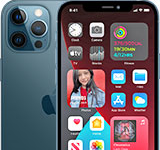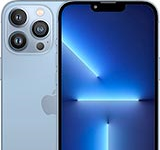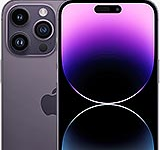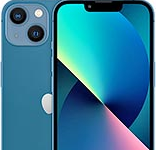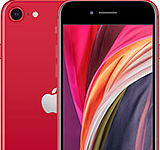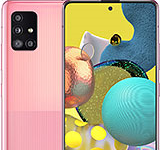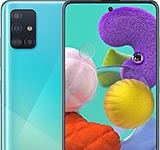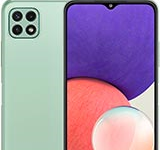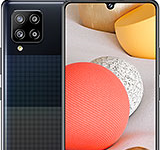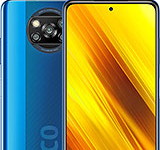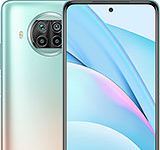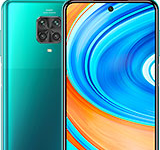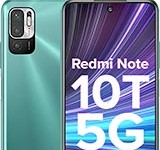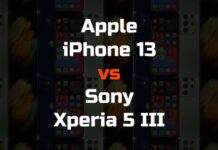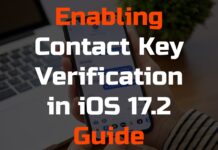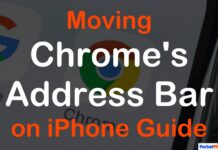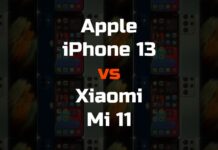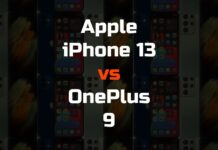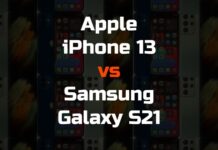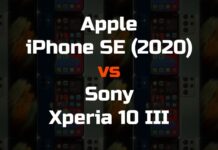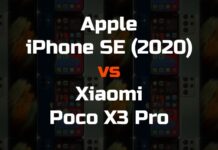Updated on November 8, 2023
When it comes to the latest flagship smartphones, two notable contenders in the market are the Apple iPhone 13 and the Google Pixel 6. Both devices offer impressive features and capabilities that cater to different user preferences.
Let’s take a closer look at five notable features of these smartphones and see how they stack up against each other.
Design and Build Quality
The Apple iPhone 13 boasts a sleek and premium design with a glass front and back, complemented by an aluminum frame.
On the other hand, the Google Pixel 6 features a stylish design with a glass front and back, along with an aluminum frame. Both devices are well-built and offer a solid feel in hand.
Display Technology
The iPhone 13 sports a Super Retina XDR OLED display with a size of 6.1 inches and a resolution of 1170 x 2532 pixels. The display is protected by Ceramic Shield glass, enhancing durability.
In contrast, the Pixel 6 features an AMOLED display that measures 6.4 inches with a resolution of 1080 x 2400 pixels. The display benefits from Corning Gorilla Glass Victus protection and an always-on display feature.
While both devices provide excellent visual experiences, the iPhone 13 offers a slightly higher resolution.
Performance and Software
The iPhone 13 is powered by Apple’s A15 Bionic chipset, providing top-notch performance and efficient power management. It runs on iOS 15, which offers a seamless and intuitive user experience.
On the other hand, the Pixel 6 is equipped with a Google Tensor chipset, ensuring smooth performance and efficient AI capabilities. It operates on the latest Android 12, which offers a customizable and feature-rich interface.
Both devices offer powerful performance, but the choice between iOS and Android ultimately depends on personal preferences.
Camera Capabilities
In terms of camera capabilities, the iPhone 13 features a dual-camera setup with 12 MP sensors. It excels in capturing high-quality photos and videos with excellent color accuracy and dynamic range.
On the other hand, the Pixel 6 also sports a dual-camera setup, with a 50 MP main sensor and a 12 MP sensor. It leverages Google’s computational photography algorithms, delivering impressive image processing and low-light performance.
Both devices offer exceptional camera capabilities, and choosing between them largely depends on individual shooting preferences.
Battery Life and Charging
The iPhone 13 is equipped with a Li-Ion 3240 mAh battery, while the Pixel 6 packs a slightly larger Li-Ion 4614 mAh battery. Both devices provide solid battery life, with the iPhone 13 offering an endurance rating of 89h and the Pixel 6 with 86h.
When it comes to charging, the iPhone 13 supports wired PD2.0 charging, allowing it to reach 50% charge in just 30 minutes.
Similarly, the Pixel 6 supports wired charging (based on a 30W charger) with PD3.0, offering the same 50% charge in 30 minutes. Charging speeds and efficiency are comparable between the two devices.
Notable Features
Key Specs |  | |
Apple iPhone 13 | Google Pixel 6 | |
Launch | September 24, 2021 | October 28, 2021 |
Network Technology | GSM / CDMA / HSPA / EVDO / LTE / 5G | GSM / CDMA / HSPA / EVDO / LTE / 5G |
Sensors | Face ID, accelerometer, gyro, proximity, compass, barometer<br>Ultra Wideband (UWB) support | Fingerprint (under display, optical), accelerometer, gyro, proximity, compass, barometer |
Dimensions | 146.7 x 71.5 x 7.7 mm | 158.6 x 74.8 x 8.9 mm |
Weight | 174 g (6.14 oz) | 207 g |
Build | Glass front (Corning-made glass), glass back (Corning-made glass), aluminum frame | Glass front (Gorilla Glass Victus), glass back (Gorilla Glass 6), aluminum frame |
SIM | Nano-SIM and eSIM or Dual SIM (Nano-SIM, dual stand-by) | Nano-SIM and eSIM |
IP Rating | IP68 dust/water resistant (up to 6m for 30 min) | IP68 dust/water resistant (up to 1.5m for 30 min) |
Display Type | Super Retina XDR OLED | AMOLED |
Display Size | 6.1 inches | 6.4 inches |
Display Resolution | 1170 x 2532 pixels, 19.5:9 ratio | 1080 x 2400 pixels, 20:9 ratio |
Display Protection | Ceramic Shield glass | Corning Gorilla Glass Victus |
Platform | iOS 15, upgradable to iOS 16.4.1 | Android 12, upgradable to Android 13 |
Chipset | Apple A15 Bionic | Google Tensor |
CPU | Hexa-core | Octa-core |
GPU | Apple GPU (4-core graphics) | Mali-G78 MP20 |
Memory | No memory card slot<br>Internal: 128GB 4GB RAM, 256GB 4GB RAM, 512GB 4GB RAM | No memory card slot<br>Internal: 128GB 8GB RAM, 256GB 8GB RAM |
Main Camera | Dual: 12 MP *12 MP | Dual: 50 MP *12 MP |
Selfie Camera | Single: 12 MP | Single: 8 MP |
USB | Lightning, USB 2.0 | USB Type-C 3.1 |
Battery Type | Li-Ion 3240 mAh, non-removable | Li-Ion 4614 mAh, non-removable |
Charging | Wired, PD2.0, 50% in 30 min | Wired (based on 30W charger), PD3.0, 50% in 30 min |
Battery Life | Endurance rating 89h | Endurance rating 86h |
Colors | Starlight, Midnight, Blue, Pink, Red, Green | Sorta Seafoam, Kinda Coral, Stormy Black |
Price | $599 / €637 / £749 / C$1,099 / ₱42,990 / ₹55,999 / Rp10,374,419 | $599 / €509 / £332 / C$525 / ₱14,680 / ₹38,849 / Rp7,005,330 |
Full Specifications & Review |
Overall Conclusion
Both the Apple iPhone 13 and Google Pixel 6 are flagship smartphones that offer impressive features and performance.
The iPhone 13 stands out with its refined design, Super Retina XDR OLED display, and powerful A15 Bionic chipset.
On the other hand, the Pixel 6 shines in terms of computational photography capabilities, smooth user experience with Android 12, and a slightly larger battery.
Ultimately, the choice between these two devices depends on factors such as personal preferences, ecosystem preferences (iOS vs. Android), and specific feature priorities.
Your thoughts are welcome. Feel free to leave any comments below.


